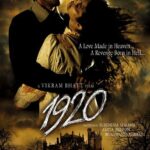What does it take to amass a fortune of $425 million in Hollywood? For Mel Gibson, the answer lies in a tapestry woven from bold choices, groundbreaking films, and a career peppered with both accolades and controversies. His journey from a rising star in the late 1970s, thanks to adrenaline-pumping roles in movies like “Mad Max” and “Lethal Weapon,” to becoming a powerhouse director and producer mirrors a rollercoaster filled with dizzying highs and stomach-churning lows. As we delve into the layers of Gibson’s financial empire, we’ll uncover how his multifaceted career has not only shaped his wealth but also left an indelible mark on the film industry.
What is Mel Gibson’s current net worth?
What is Mel Gibson’s current net worth?
As of now, Mel Gibson boasts an impressive net worth estimated at a remarkable $425 million. This substantial wealth has been the result of his lengthy and diverse career in the entertainment industry, where he has excelled as an actor, director, producer, and screenwriter.
Gibson’s journey in Hollywood began in the late 1970s, quickly gaining fame through iconic roles in franchises like Mad Max and Lethal Weapon. His talent reached new heights with the release of Braveheart, a film he not only starred in but also directed, earning an Academy Award for Best Director. The film’s commercial success contributed millions to his net worth. Beyond acting, Gibson’s financial acumen shone through in his ventures with The Passion of the Christ, a film that grossed over $370 million at the box office, further enhancing his financial portfolio.
The wealth he has accumulated over the decades is not solely due to box office hits. Gibson has strategically invested in various real estate properties across the globe, including luxurious estates in Malibu and a private island in Fiji. This savvy investment approach has undoubtedly supplemented his income. Moreover, Gibson’s diverse skill set in producing and directing has allowed him to maintain relevance in a constantly evolving industry, securing his position as one of Hollywood’s wealthiest figures. It is not only his past successes that contribute to his net worth but also his capability to navigate challenges within the industry, ensuring that he remains a prominent name in entertainment.
In summary, Mel Gibson’s net worth reflects both his creative achievements and his business savvy, establishing him as a formidable player in the film industry.
How much did Mel Gibson earn from “The Passion of the Christ”?
Mel Gibson, the multifaceted actor and director, ventured into the realm of filmmaking with his ambitious project, “The Passion of the Christ.” With a personal investment of $45 million—comprising $30 million for production and $15 million for marketing—Gibson took a significant financial risk. His strategy paid off immensely as he retained 50% of the film’s profits.
Upon release, “The Passion of the Christ” became a cultural phenomenon, generating over **$370 million** at the U.S. box office alone, solidifying its status as the highest-grossing R-rated film of all time. Furthermore, Gibson capitalized on the immense popularity through various revenue streams, including merchandise sales, which brought in an additional **$50 to $100 million**, and DVD sales that amassed around **$75 million**. By tallying all earnings and profit shares, Gibson’s total income from this project eclipsed **$400 million**, marking a significant accomplishment in both his career and the film industry at large.
Gibson’s entrepreneurial insight not only illustrates his prowess in the entertainment sphere but also highlights his ability to create impactful narratives that resonate deeply with audiences, leading to both critical acclaim and financial success.
How did Mel Gibson start his career in acting?
Mel Gibson kicked off his acting career following his graduation from the prestigious National Institute of Dramatic Art in Sydney, Australia, in 1977. His early work primarily involved theater and television, but it was his breakout role in the Mad Max series that truly catapulted him into the spotlight.
Gibson portrayed the titular character in the dystopian action films, which were groundbreaking for Australian cinema. His compelling performance in Mad Max (1979) and its sequels captured the attention of global audiences. By 1985, his role in Mad Max Beyond Thunderdome earned him his first major payday of $1 million, a remarkable feat that signaled the beginning of his ascent to Hollywood fame.
In just a few years, Gibson’s unique blend of rugged charisma and intense acting skill transformed him into one of the industry’s leading men. Following his success in Mad Max, he also starred in the Lethal Weapon franchise, which further solidified his status in the action genre and showcased his versatility as an actor. Beyond just acting, Gibson’s transition into directing and producing later on proved his enduring impact on the film industry.
From Australian cinema to Hollywood blockbuster, his journey illustrates how talent combined with the right opportunities can lead to remarkable success.
What are some highlights of Mel Gibson’s directorial work?
Mel Gibson’s directorial portfolio is impressive and includes several noteworthy films, with “Braveheart” leading the charge.
Directed in 1995, “Braveheart” not only won Gibson an Oscar for Best Director but also solidified his reputation as a serious filmmaker capable of delivering epic narratives. This historical drama, which follows the life of Scottish warrior William Wallace, is renowned for its sweeping landscapes and inspiring tale of freedom, capturing audiences’ hearts worldwide.
In addition to this, Gibson directed the controversial “The Passion of the Christ” in 2004. This film explores the last hours of Jesus Christ’s life and sparked significant conversation due to its graphic portrayal of violence. Despite, or perhaps because of its divisive reception, it became the highest-grossing R-rated film of all time, grossing over $600 million globally and leaving a lasting impact on the film industry.
Other notable mentions in his directorial career include “Apocalypto” (2006), a riveting adventure set in the declining period of the Maya civilization, and “Hacksaw Ridge” (2016), a gripping World War II story that earned Gibson another nomination for Best Director. Through these films, Gibson demonstrates his ability to tackle complex themes, bold storytelling, and his unique directorial style that resonates with audiences.
How has Mel Gibson’s personal life influenced his career and public image?
Mel Gibson’s personal life has had a profound impact on both his career and public image, significantly shaping the way audiences and industry professionals perceive him.
Throughout his life, Gibson has faced a series of challenges, including marital issues, substance abuse problems, and controversial remarks that have captured media attention. For instance, his highly publicized divorce and subsequent legal troubles revealed a turbulent personal life, which inevitably spilled over into the public realm, creating a narrative that many found difficult to overlook.
These incidents have directly influenced his relationships with major studios, leading to notable career setbacks. After various controversies, Gibson’s projects initially saw diminished backing, limiting his opportunities in Hollywood. However, in recent years, he has demonstrated a desire to move beyond these setbacks, actively working on realigning his career by taking on directing roles, as seen with successful films like “Hacksaw Ridge,” which earned him critical acclaim and Academy Award nominations.
Despite the rocky path, Gibson’s tenacity and talent have allowed him to slowly rebuild his reputation, although skepticism still lingers among audiences. He has been candid about his struggles, using his life experiences as a backdrop for some of his creative work, illustrating a man who has grappled with personal demons while striving for redemption in both his professional and personal life.
In conclusion, while Mel Gibson’s journey has been marked by significant turmoil, his efforts to reintegrate into Hollywood and share his story continue to resonate, highlighting the complex interplay between personal challenges and professional achievements.
What are Mel Gibson’s real estate investments like?
Mel Gibson’s real estate investments are as notable as his film career, marked by an impressive portfolio of luxurious properties across the globe. A prime example of his acumen in this field is his acquisition of Old Mill Farm in Greenwich, Connecticut, which he purchased for $9 million and later sold for a staggering $40 million, demonstrating not only a keen eye for valuable real estate but also an understanding of market trends.
In addition to Old Mill Farm, Gibson’s Malibu compound exemplifies his affluent lifestyle and taste for exquisite living spaces. This expansive property features a stunning 5,403 square-foot home, complete with opulent amenities such as a pool, spa, and breathtaking ocean views, ensuring both comfort and luxury.
Beyond these well-known properties, Gibson’s real estate strategy often includes purchasing undervalued assets, renovating them to increase their market value, and then selling for a substantial profit. This savvy approach is not only profitable but also showcases his ability to identify potential in properties that others might overlook.
Whether it’s a luxurious mansion or a sprawling estate, it’s evident that Mel Gibson’s real estate investments reflect his personal style and savvy investment techniques, making him a significant player in the high-end property market. So, if you’re ever in the market or just curious, remember, real estate can be just as thrilling as Hollywood!
In what ways does Mel Gibson contribute to the film industry beyond acting?
Beyond his on-screen performances, Mel Gibson plays a significant role in the film industry through various behind-the-scenes contributions. He is deeply involved in writing, producing, and directing films via his company, Icon Productions, which he established in 1989.
Gibson’s impact is noticeable across multiple genres, from action-packed epics like Braveheart to introspective dramas such as The Passion of the Christ. His directorial vision has not only earned critical acclaim but also box office success, showcasing his ability to create compelling narratives that resonate with diverse audiences.
Furthermore, Gibson’s commitment to storytelling is evident through his collaboration with other filmmakers and talents, helping to nurture upcoming projects that contribute to the industry’s evolution. For instance, his ability to attract top-tier talent and secure funding for ambitious projects illustrates his influential network and production acumen in a competitive landscape.
As an artist who continues to push creative boundaries, Gibson’s multifaceted involvement in the industry cements his legacy as more than just an actor, highlighting his extensive contributions as a writer, producer, and director. His ongoing engagement with high-profile projects ensures that he remains a significant figure in contemporary cinema.













